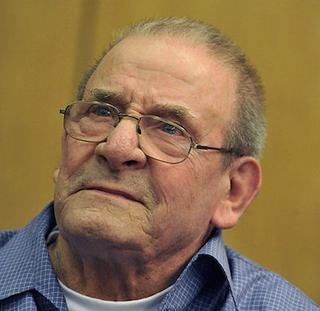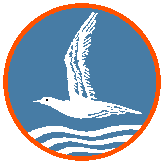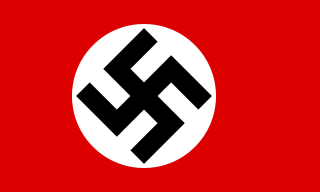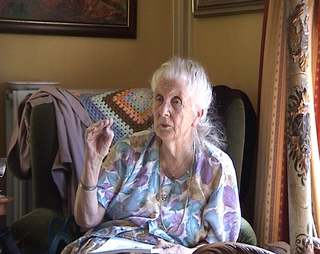 W
WThe 5th SS Panzer Division Wiking or SS Division Wiking was an infantry and later an armoured division among the thirty-eight Waffen-SS divisions of Nazi Germany. It was recruited from foreign volunteers in Denmark, Norway, Sweden, Finland, Estonia, the Netherlands and Belgium under the command of German officers. During World War II, the division served on the Eastern Front. It surrendered in May 1945 to the American forces in Austria.
 W
WThe Volunteer Legion Netherlands was a collaborationist military formation recruited in the German-occupied Netherlands during World War II. It was formed in the aftermath of the German invasion of the Soviet Union and fought on the Eastern Front in the Waffen SS alongside similar formations from other parts of German-occupied Western Europe. It was the largest Dutch SS unit.
 W
WThe 34th SS Volunteer Grenadier Division "Landstorm Nederland" was a division in the Waffen-SS of Nazi Germany during World War II. It was formed by converting the SS Volunteer Brigade Landstorm Nederland into a division. It comprised volunteers of Dutch background and saw action on the Western Front, but its strength never reached more than a brigade.
 W
WWillem "Wim" Aantjes was a Dutch politician of the Christian Democratic Appeal (CDA).
 W
WTjapko Antoon van Bergen was a Dutch rower. He competed at the 1928 Summer Olympics in the men's coxed pair with Cornelis Dusseldorp; their boat capsized in the first round and they did not finish.
 W
WHeinrich Boere was a convicted German-Dutch war criminal and former member of the Waffen-SS. He was on the Simon Wiesenthal Center's list of most wanted Nazi war criminals.
 W
WJan Willem Ter Braak was a Dutch espionage agent working for Germany who operated for five months in the United Kingdom. Ter Braak is believed to have been the German agent who was at large for the longest time in Britain during the Second World War, despite his short period of activity. When he ran out of money, Ter Braak committed suicide in a public air raid shelter.
 W
WSiert Bruins, also known as Siegfried Bruns and nicknamed the Beast of Appingedam, was a Dutch member of the SS and SD during World War II.
 W
WJan Henrik Eekhout was a Dutch writer, poet and translator, particularly known as the author of the novel Pastoor Poncke. During the Second World War Eekhout was a staunch Nazi. However, the Dutch resistance fighter Jan "Poncke" Princen gained his nickname by reading aloud from this book to fellow-prisoners in a Nazi prison during World War II.
 W
WKlaas Carel Faber was a convicted Dutch-German war criminal. He was the son of Pieter and Carolina Josephine Henriëtte Faber, and the brother of Pieter Johan Faber, who was executed for war crimes in 1948. Faber was on the Simon Wiesenthal Center's list of most wanted Nazi war criminals. Faber died in Germany in May 2012, having never been extradited.
 W
WJohannes Hendrik Feldmeijer was a Dutch Nazi politician and a member of the NSB.
 W
WCornelis "Kees" van Geelkerken was a Dutch political leader and civil servant.
 W
WRobert van Genechten was a Belgian-born Dutch politician and writer and a leading collaborator during the German occupation of the Netherlands.
 W
WDirk Hannema was a controversial museum director and art collector. The Museum Boijmans flourished under his directorship, but he was also arrested and interned for eight months for his conduct during the German occupation of the Netherlands during World War II. Further, his reputation was severely damaged when he inaccurately attributed various forgeries to the painter Johannes Vermeer, among others. However, a quarter century after his death, he was at least partially vindicated when Le Blute-Fin Mill, a painting he had championed as a van Gogh, was finally authenticated as being by the renowned painter.
 W
WAdriaan Nicolaas Johan van Hees was a Dutch actor and member of the National Socialist Movement in the Netherlands (NSB). Van Hees was trained in Amsterdam and Germany, and spent a few years in theater and film. He quit professional acting to join the NSB, giving speeches and overseeing the organization's theater division, arguing that the change he thought necessary in Dutch drama had to come from political revolution. He became depressed and suicidal when he discovered he was part Jewish; still, he tried to join the SS but was denied. After the war, he was banned from the stage for ten years, and sentenced to five years in prison.
 W
WJonny Heykens, Johannes Jacobus Heijkens was a Dutch composer of light classical music, remembered above all for his jaunty Ständchen (Serenade) No.1 Opus 21.
 W
WHans Hirschfeld was a Dutch economist.
 W
WGerrit Hendrik Kersten was a Dutch Calvinist minister and politician. In 1907, Kersten founded the Reformed Congregations. Eleven years later, in 1918, he had established the Reformed Political Party to realize his vision of "a Calvinist Netherlands without cinema, sports, vaccinations and social security". He was the party's first member of the House of Representatives, being elected in 1922. He would remain in parliament until 1945.
 W
WGeorge Wilhelm Kettmann or George Kettmann Jr. was a Dutch poet, writer, journalist and publisher who promoted Nazism in the Netherlands. With his wife, he founded the best known Dutch Nazi publishing house, De Amsterdamsche Keurkamer. Until 1941 he was editor in chief of Volk en Vaderland, the weekly journal of the National Socialist Movement in the Netherlands (NSB), the movement of Anton Mussert.
 W
WAgeaus Yme "Gejus" van der Meulen was a Dutch football goalkeeper. One of the most popular Dutch sportsmen of the 1920s–1930s, he fell into disgrace in the late 1940s due to his collaboration with Nazi Germany.
 W
WAlois Miedl was a naturalized Dutch art dealer, originally a German Nazi banker, born in Munich, who had moved to and was mainly active in the Netherlands, involved with the sales of properties stolen from Jews who had fled or had been deported.
 W
WThe National Socialist Movement in the Netherlands was a Dutch fascist and later Nazi political party that called itself a "movement". As a parliamentary party participating in legislative elections, the NSB had some success during the 1930s. Under German occupation, it remained the only legal party in the Netherlands during most of the Second World War.
 W
WThe Nationale Jeugdstorm was a Dutch youth movement associated with the National Socialist Movement in the Netherlands (NSB) that existed from 1934 to 1945, organized as the Dutch equivalent of the German Hitlerjugend and as a Nazi counterpart of Scouting and Guiding in the Netherlands.
 W
WMartinus "Tinus" Bernardus Osendarp was a Dutch sprint runner.
 W
WFolkert Evert Posthuma was a Dutch politician.
 W
WErnst Herman Ridder van Rappard was a Dutch Nazi and anti-Semite. After leading his own failed Nazi movement van Rappard enlisted in the Schutzstaffel and saw active service in the Second World War.
 W
WThe Reichskommissariat Niederlande was the civilian occupation regime set up by Germany in the German-occupied Netherlands during World War II. Its full title was the Reich Commissariat for the Occupied Dutch Territories. The administration was headed by Arthur Seyss-Inquart, formerly the last chancellor of Austria before initiating its annexation by Germany.
 W
WBernardus Andries "Dries" Riphagen was a Dutch gangster and Nazi collaborator who is best known in the Netherlands for collaborating with the Nazi Sicherheitsdienst (SD) to locate as many Dutch Jews as possible and have them delivered to Nazi concentration camps during the occupation.
 W
WFlorentine Sophie Rost van Tonningen was the wife of Meinoud Rost van Tonningen, the second leader of the National Socialist Movement in the Netherlands (NSB) and President of the National Bank during the German occupation (1941–1945). Because she continued to support and propagate the ideals of Nazism after World War II and the death of her husband, she became known in the Netherlands as the "Black Widow".
 W
WMeinoud Marinus Rost van Tonningen was a Dutch politician of the National Socialist Movement (NSB). During the German occupation of the Netherlands in World War II, he collaborated extensively with the German occupation forces. He was the husband of Florentine Rost van Tonningen.
 W
WJacobus Johannes 'Jaap' Schrieke was a Dutch administrator and jurist who served as Secretary-General of the Dutch Ministry of Justice during the German occupation of the Netherlands. He was also the brother of the Dutch jurist and politician Bep Schrieke who briefly served as minister of education during the fifth Colijn government in 1939.
 W
WHugues Alexandre Sinclair de Rochemont was a Dutch fascist and later a collaborator with the Nazis.
 W
WEdward John Voûte was the Mayor of Amsterdam from 1941 to 1945, during the German occupation of the Netherlands.
 W
WJan Pieter Marie Laurens de Vries was a Dutch philologist, linguist, religious studies scholar, folklorist, educator, writer, editor and public official who specialized in Germanic studies.
 W
WFriedrich Weinreb was a Jewish Hassidic economist and narrative author.